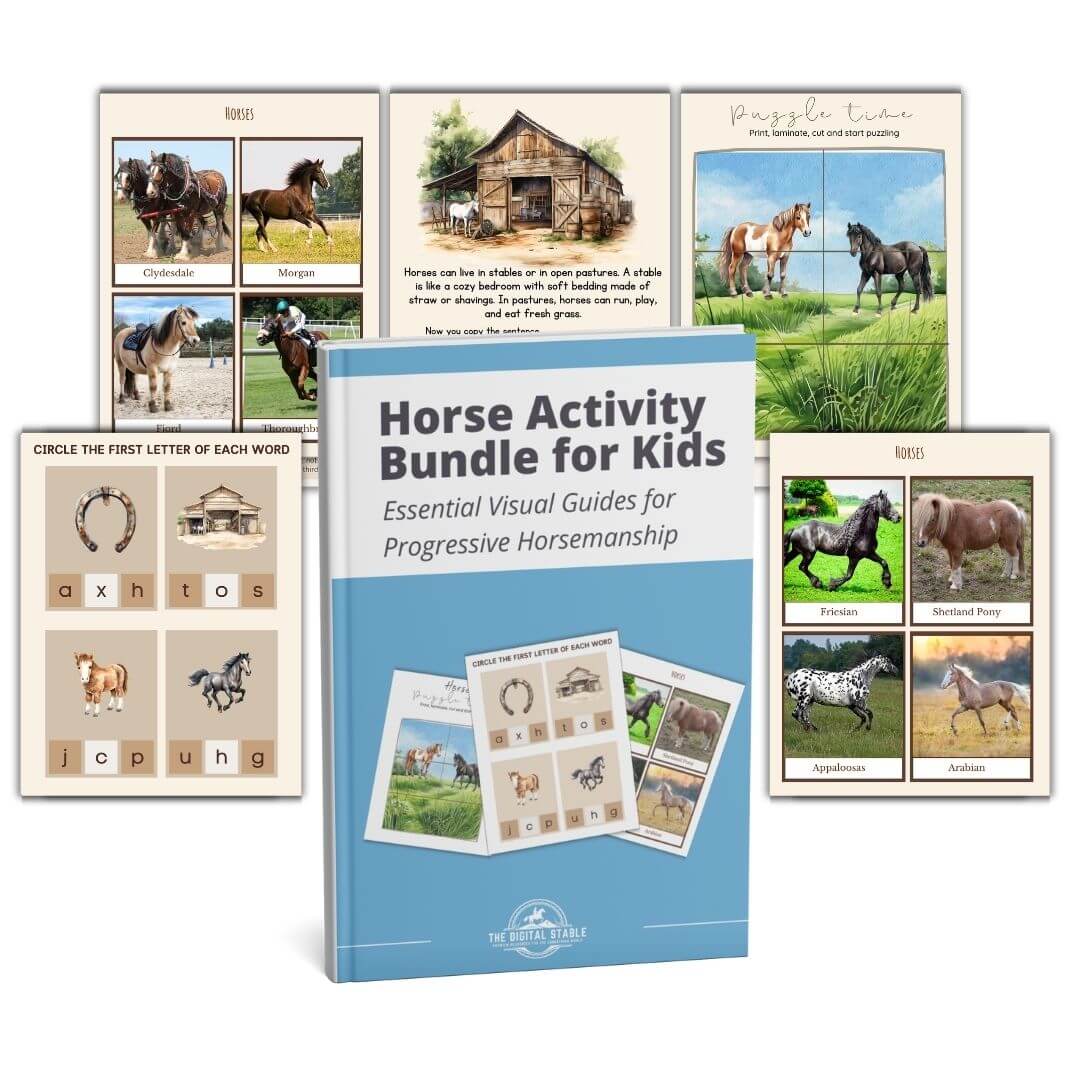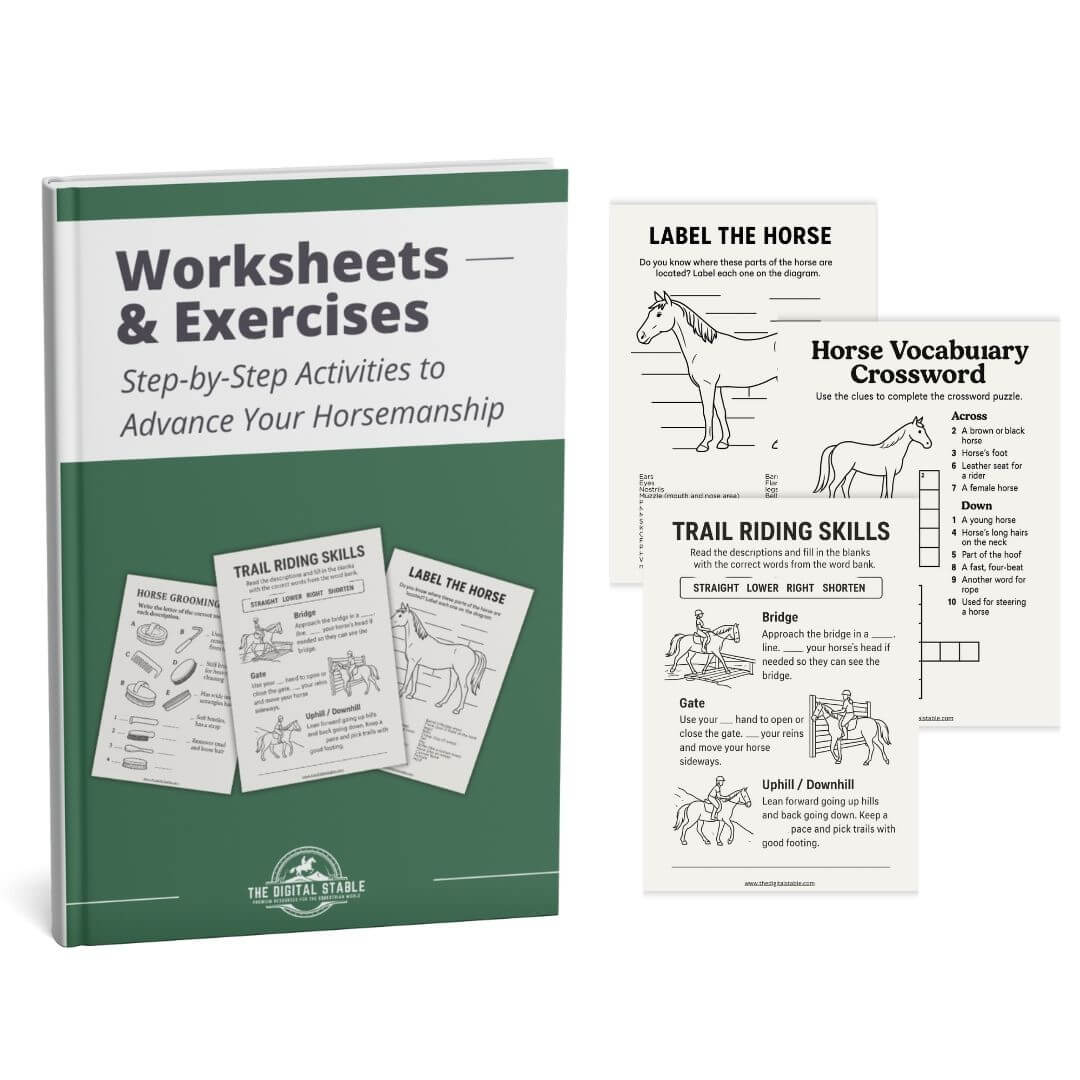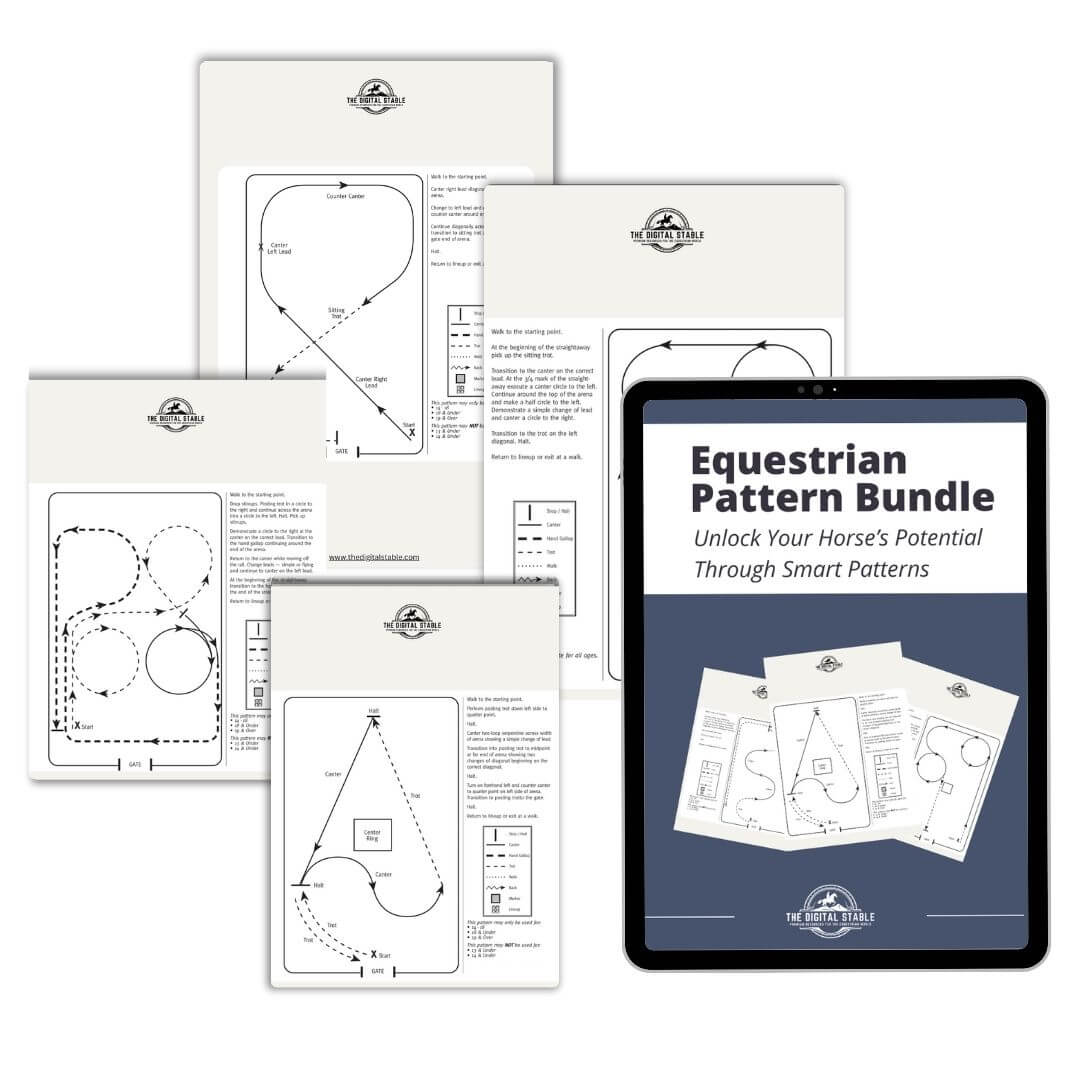 If you’ve ever explained “inside leg to outside rein” ten times in one lesson and still gotten blank stares, this one’s for you.
If you’ve ever explained “inside leg to outside rein” ten times in one lesson and still gotten blank stares, this one’s for you.
Riders — especially beginners and kids — don’t always process verbal cues the same way we say them.
That’s where visual learning tools come in: posters, diagrams, activity sheets, and simple arena visuals that make abstract concepts click instantly.
Let’s look at why every modern riding school can (and should) use visual aids to teach more effectively — and with a lot less repetition.
People Remember What They See
Research in education shows that we retain up to 65% more when information is paired with visuals.
In riding, this matters — because so much of what we teach is spatial and physical: position, movement, timing.
A diagram of a correct 20-meter circle or a shoulder-in does more in 5 seconds than a 5-minute explanation.
It’s not “dumbing down” the lesson — it’s communicating through clarity.
Visuals Help Beginners Build Confidence
When students can see what’s expected — a diagram, a position photo, a labeled horse anatomy chart — anxiety drops instantly.
Instead of thinking “I don’t understand,” they think “I can try that.”
This is especially powerful for:
- Children and visual learners
- ESL students (non-native speakers)
- Nervous beginners who learn by imitation
Confidence = calm riders = calm horses.
That alone makes visuals worth their weight in gold.
Visual Tools Save Instructors Time
Let’s be honest — explaining the same thing 12 times a day gets exhausting.
If you have posters around your arena for arena letters, riding positions, or horse emotions, they become your silent assistant.
Instead of repeating, you can simply point and say, “Check the poster behind you — that’s your goal.”
Students start taking responsibility for their own learning, and your voice finally gets a break.
Visual Aids Keep Group Lessons Organized
When teaching multiple riders, clear visuals help structure space and focus attention.
Examples:
- Cone diagrams showing lane spacing
- Pole layouts printed and laminated
- Behavior posters at the grooming area
- Color-coded zones for different skill levels
It’s not just about aesthetics — it’s about maintaining calm, coordinated movement in busy environments.
Visual Reinforcement Deepens Understanding
After a lesson, riders often forget why an exercise mattered.
Having them look at a diagram, trace a pattern, or complete a short worksheet afterward helps solidify the concept in their mind.
It’s the bridge between doing and understanding.
That’s where real progress happens.
Parents Love Seeing Visual Structure
For lesson programs and schools, visual organization isn’t just helpful for riders — it impresses parents and visitors.
When your barn walls show colorful, educational materials, it communicates professionalism, safety, and attention to detail.
It also gives parents something to talk about (“Oh, so that’s what a diagonal is!”) and helps them appreciate your teaching craft.
They Create a Culture of Learning
When visuals are part of the environment, learning feels natural.
Students begin referencing them on their own:
“I was on the outside diagonal, right?”
“That’s the bend we saw on the circle poster.”
That shift — from instructor-driven correction to student-driven learning — is the dream of every great riding school.
Final Thought
Visual learning isn’t a gimmick; it’s a bridge between explanation and experience.
It helps students of every age, language, and ability learn faster, stay calmer, and feel prouder of their progress.
And the best part? Once you put those visuals up, they teach with you — every single day.
Want ready-to-print posters, worksheets, and visual lesson guides designed specifically for riding schools?
Explore The Digital Stable Bundle — over 200 resources that make teaching clear, visual, and effortless.

















1 comment
Why don’t you put examples in this blurb so we can see what you mean?